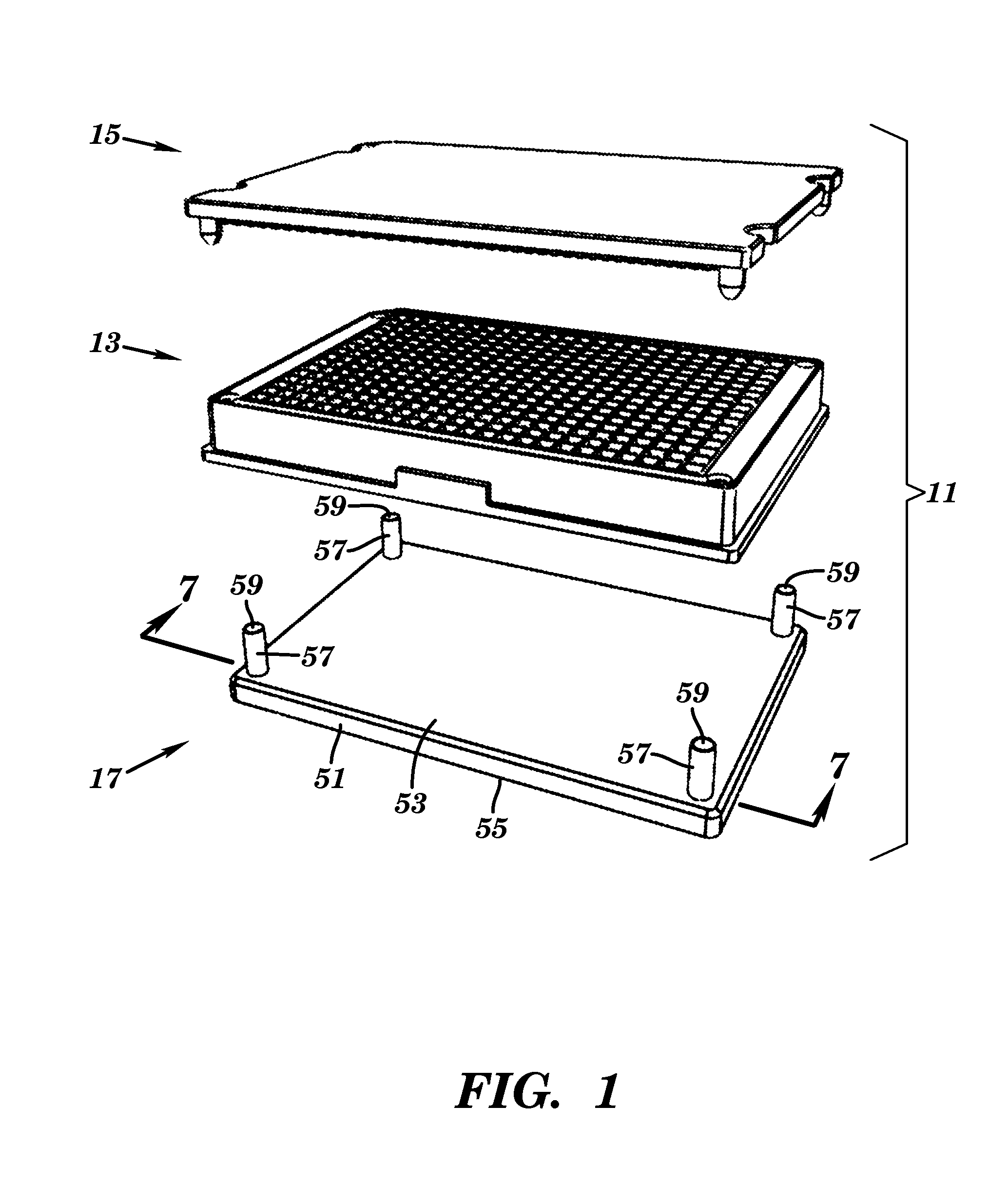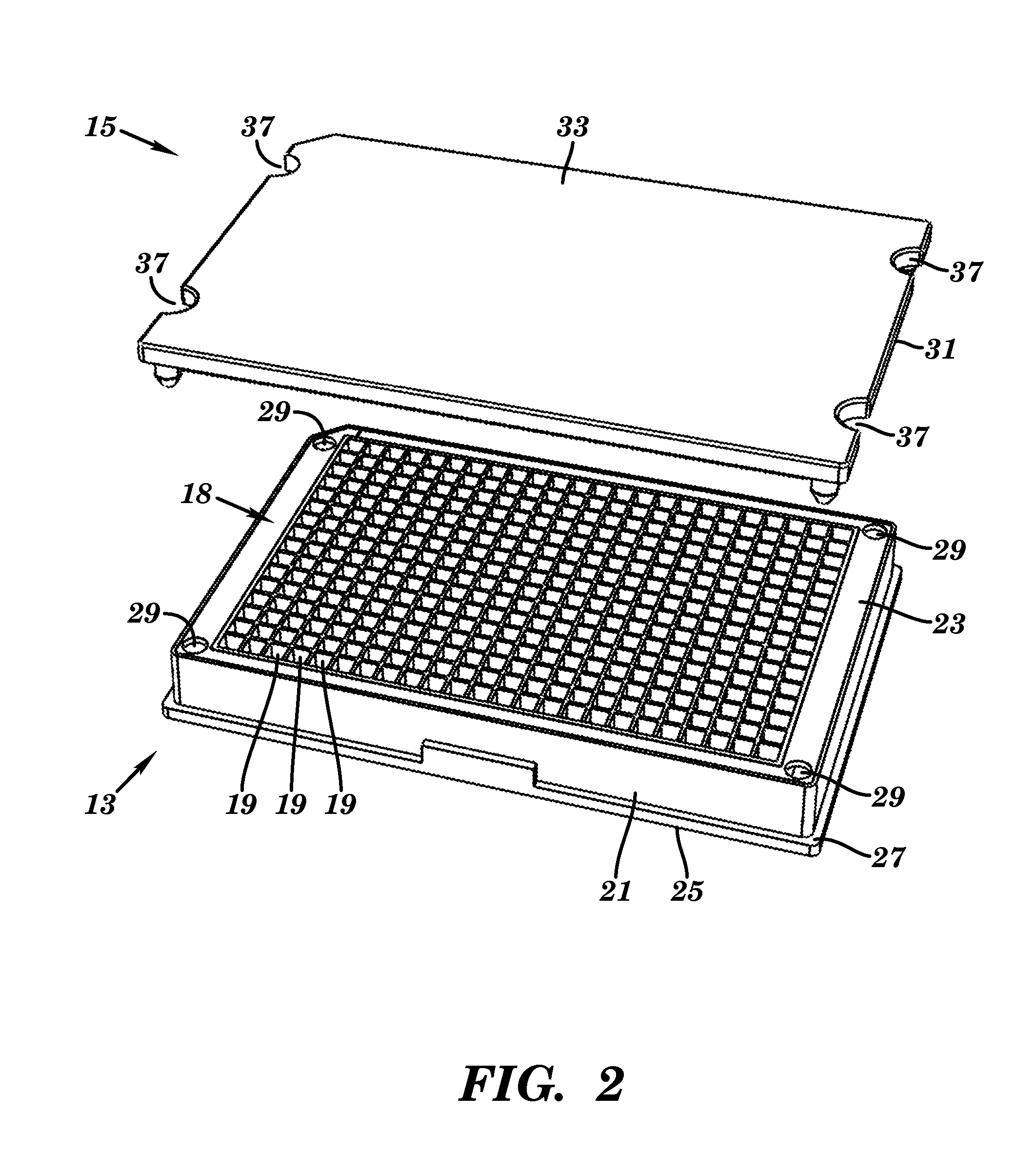Apparatus for lidding or delidding microplate
- Summary
- Abstract
- Description
- Claims
- Application Information
AI Technical Summary
Problems solved by technology
Method used
Image
Examples
first embodiment
[0033]Referring now to FIG. 1, there is shown an exploded, top perspective view of a microplate kit that is constructed according to the teachings of the present invention and identified generally by reference numeral 11.
[0034]Microplate kit 11 comprises a microplate 13, a lid 15 and a lid removal tool 17. As will be described in detail below, lid 15 is designed to be mounted on microplate 13. Tool 17 is designed to assist in the removal (i.e., or delidding) of lid 15 when mounted on microplate 13.
[0035]Referring now to FIG. 2, microplate 13 has a generally block-shaped design and includes an enlarged sample area 18 that is provided with a plurality of individual, vertically-disposed wells 19. In the present embodiment, microplate 13 is represented as having 384 wells. However, it is to be understood that the present invention is not limited to any particular density of wells 19. Rather, the number of wells 19 could be modified to any density without departing from the spirit of the...
second embodiment
[0056]Referring now to FIG. 8, there is shown an exploded, top perspective view of a microplate kit that is constructed according to the teachings of the present invention and identified generally by reference numeral 111.
[0057]Microplate kit 111 is similar to microplate kit 11 in that microplate kit 111 comprises a microplate 113, a lid 115 designed to be removably mounted onto microplate 113 and a tool 117 designed to assist in the removal of lid 115 when mounted on microplate 113.
[0058]Referring now to FIG. 9, microplate 113 is similar to microplate 13 in that microplate 113 is generally block-shaped in its design and includes an enlarged sample area 118 that is provided with a plurality of individual, vertically-disposed wells 119. Microplate 113 similarly includes a hollow outer frame, or sidewall, 121 that is formed directly around the periphery of sample area 118, sidewall 121 having an inverted U-shaped configuration in lateral cross-section (as seen most clearly in FIG. 12(...
PUM
| Property | Measurement | Unit |
|---|---|---|
| Area | aaaaa | aaaaa |
Abstract
Description
Claims
Application Information
 Login to View More
Login to View More - R&D
- Intellectual Property
- Life Sciences
- Materials
- Tech Scout
- Unparalleled Data Quality
- Higher Quality Content
- 60% Fewer Hallucinations
Browse by: Latest US Patents, China's latest patents, Technical Efficacy Thesaurus, Application Domain, Technology Topic, Popular Technical Reports.
© 2025 PatSnap. All rights reserved.Legal|Privacy policy|Modern Slavery Act Transparency Statement|Sitemap|About US| Contact US: help@patsnap.com



